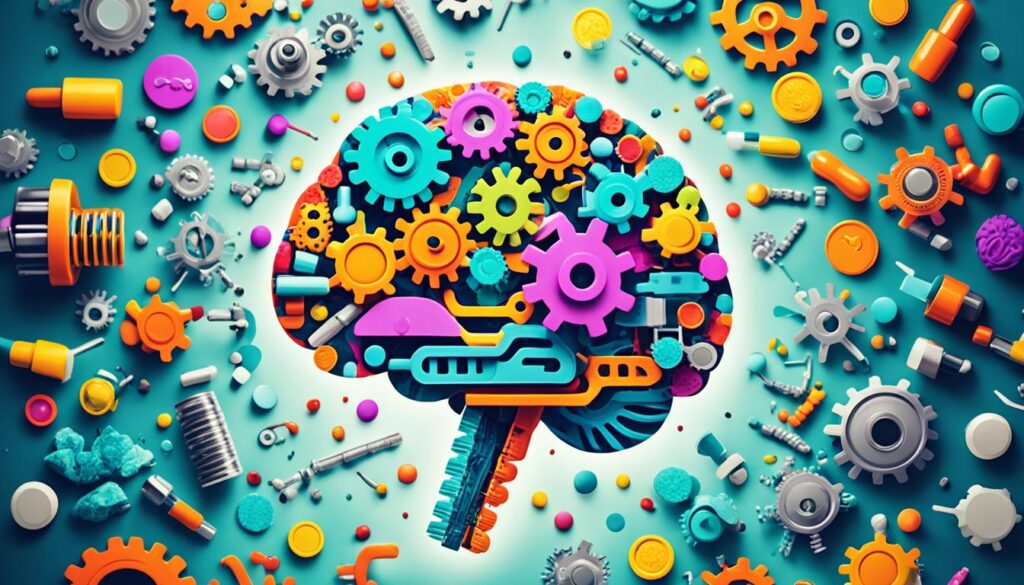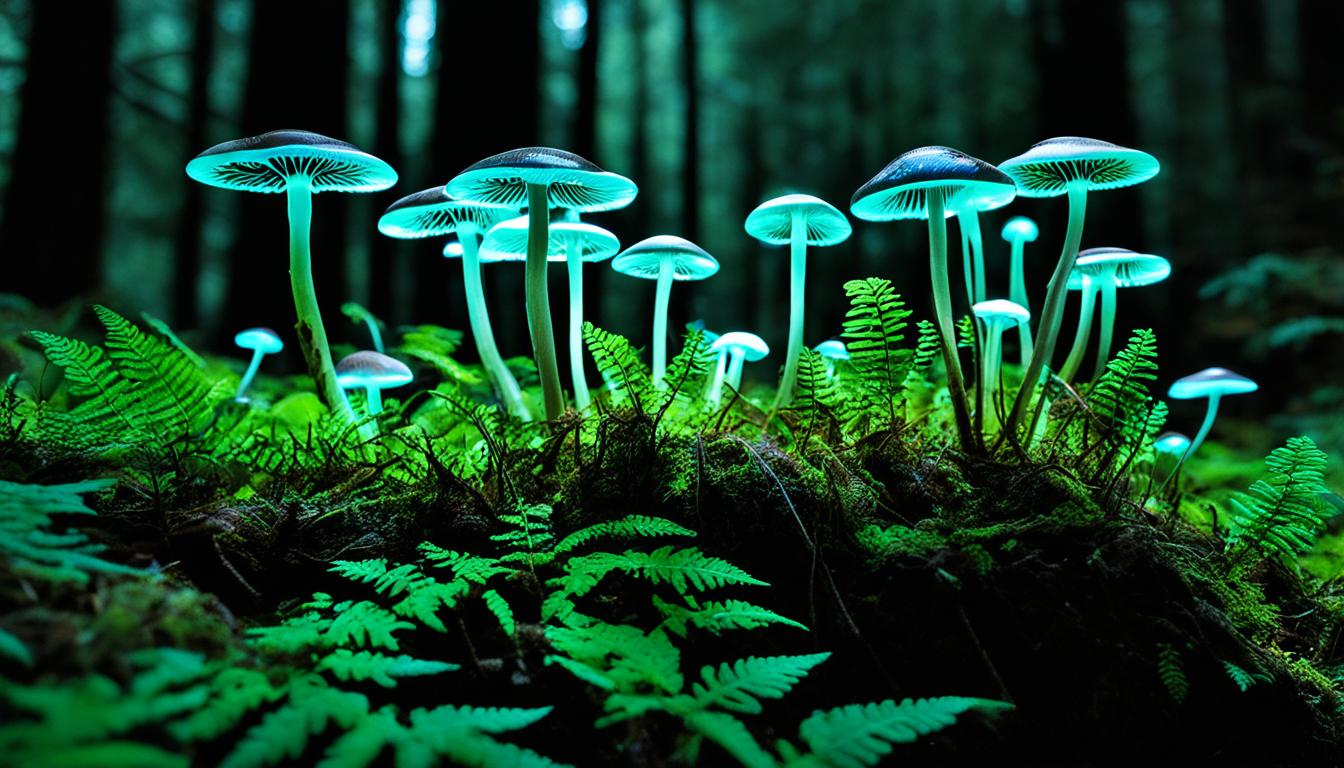Did you know sleeping less than six hours a night increases your risk of dying early by 12%? This fact shows the importance of sleep and health for a long life. Biohacking is a new way to make yourself healthier and stronger. It uses science and personal tests to help you find what works best for your health.
This guide talks about different biohacking methods that can change your life. You’ll learn about improving your diet and practicing mindfulness. These steps can help you reach your highest potential. Whether you’re new or experienced in biohacking, this article will show you effective ways to boost your health and abilities.
Key Takeaways
- Biohacking involves combining science and personal experimentation for self-optimization.
- Improving sleep quality can significantly enhance cognitive function and well-being.
- Nutrition plays a vital role in energy production and overall health.
- Mindfulness and meditation practices can foster emotional resilience and clarity.
- Smart supplements support cognitive function and physical performance.
- Innovative techniques like cold exposure can stimulate various health benefits.
Understanding Biohacking: What It Is and Why It Matters
What is biohacking? It means taking control of your biology to better your health and function. It mixes biology, neuroscience, and technology. This allows you to boost your well-being. Biohacking’s core is self-testing. This helps find lifestyle changes that improve health.
People often change their diets to get better nutrition and metabolism. Many in the U.S. struggle to get enough sleep. Biohacking helps tackle these issues by improving energy and sleep for a healthier life.
Exercises like HIIT can quickly improve your brain’s flexibility. Just 20 minutes of HIIT can make a difference. Brain biohacking is also key. It helps improve thinking and memory by increasing BDNF levels.
Devices like smartwatches help monitor your health in real-time. DIY biology allows anyone to experiment and share findings. This makes science open to all. It boosts global biohacking interest, as people look for custom solutions based on genetics through nutrigenomics.
This new method is popular, especially among those 35 to 50 years old. They want to actively fight aging signs. By understanding biohacking basics, you can greatly improve your life. Whether with diet, exercise, or tech, biohacking is key to enhancing well-being.
| Biohacking Technique | Description | Benefits |
|---|---|---|
| Nutrient-Dense Diets | Focus on whole foods rich in nutrients | Improves metabolic efficiency and overall health |
| High-Intensity Interval Training (HIIT) | Short bursts of intense exercise followed by rest | Enhances brain neuroplasticity, increases cardiovascular fitness |
| Wearable Technology | Devices that track health metrics like heart rate and sleep | Provides insights for better health management |
| DIY Biology | Experimentation and research done independently | Empowers individuals to explore biological systems |
| Cold Water Therapy | Exposure to cold water for health benefits | Boosts immune function, reduces inflammation |
Biohacking lets you find personal health solutions. It opens the way to massive improvements and deeper knowledge of your biology.
Key Principles of Biohacking for Self-Optimization
The journey into biohacking covers key principles about making yourself better. The first principle is self-quantification. This means tracking information about your body and habits to find ways to improve. You get to deeply analyze your health, from how well you sleep to what you eat.
Another important part is creating personal plans. Since everyone’s body is different, each person needs a plan just for them. Take nutrigenomics, which looks at how food affects your genes. It helps you adjust your diet to boost your metabolism and lower your risk of diseases.
Trying new methods step by step is also crucial in biohacking. You can test out different tactics over time, making small changes that work best for you. Things like fasting apps and glucose monitors can help you fine-tune your eating and exercise plans. They provide instant feedback.

Biohackers focus on slow but steady improvements. This approach ensures lasting benefits and better health overall. Most importantly, knowing these principles gives you a strong start on your self-optimization journey.
Getting Started with Biohacking Techniques
Starting your biohacking path opens up new ways to improve yourself. Digging into beginner biohacking lets you begin without feeling too much pressure. You can start simple, like monitoring your sleep and what you eat. Wearables can give you helpful insights, making it simpler to tweak things.
Looking into well-liked biohacking techniques such as intermittent fasting is smart. It’s good for your metabolism. This approach makes you think about when you eat, not just what you eat. Finding what fits your body’s needs is key.
Small steps are more powerful than you might think. They create a strong base for your biohacking adventure. With cool methods like freezing therapy and red light therapy getting popular, it’s obvious people want new health tips. Trying out these self-improvement strategies helps you find what works for you and meets your wellness goals.

Diet Optimization: Fueling Your Body for Performance
Optimizing your diet boosts performance and well-being. A biohacking diet focuses on nutrient-rich foods. Foods that improve your mind and energy. Choose whole foods, lean proteins, and healthy fats. These foods meet your body’s needs and cut down on bad sugars and carbs.
Many look into diet optimization through intermittent fasting. It can improve metabolism and mental clarity. It helps you pick foods that raise your energy levels. Knowing how foods affect your mood and focus helps you manage your health.
Try eating foods high in omega-3s and antioxidants. These performance fueling foods are key for brain health and vitality. Everyone’s biology is different, so tailor your diet to your genetics and metabolism.

- Leafy greens for vitamins and minerals
- Fish high in omega-3s, like salmon
- Nuts and seeds for healthy fats
- Whole grains for long-lasting energy
- Fermented foods for gut health
Check out the table below to see how different foods help your biohacking diet:
| Food Group | Primary Benefit | Example Foods |
|---|---|---|
| Proteins | Muscle repair and energy | Chicken, Quinoa, Eggs |
| Healthy Fats | Cognitive function | Avocado, Olive Oil, Walnuts |
| Fruits and Vegetables | Vitamins and minerals | Berries, Spinach, Broccoli |
| Whole Grains | Sustained energy | Brown Rice, Oats, Buckwheat |
| Fermented Foods | Gut health | Yogurt, Sauerkraut, Kimchi |
Adding these performance fueling foods will change your health. Always talk to a healthcare pro or nutrition expert before big diet changes. Doing this can make you more energetic and focused.
Sleep Enhancement Strategies for Better Recovery
Quality sleep is key to good recovery and well-being. Using sleep improvement methods can make your life better. For starters, have a set time to sleep and wake. This helps your body keep a regular rhythm. Try to sleep and get up at the same hour every day for the best sleep.
Make a relaxing bedtime routine to get your body ready for sleep. This can be reading, stretching, or doing things that relax you. Make your bedroom a calm place. Use blackout curtains and a comfy mattress to help with this.
Keeping track of your sleep can show what you need to improve. Track your heart rate, how you breathe, and how much you move at night. This info helps understand your sleep. It lets you make changes for a better night’s rest.
It’s important to lessen things that disturb your sleep. Lower your screen time before bed to help with sleep. Watch your caffeine use in the afternoon and evening. Try calming practices like mindfulness or meditating before bed. This helps your mind and emotions.
| Strategy | Description | Benefits |
|---|---|---|
| Consistent sleep schedule | Go to bed and wake up at the same time daily. | Regulates the body clock and enhances sleep quality. |
| Calming pre-sleep routine | Engage in relaxing activities before bed. | Promotes relaxation, helps you unwind, and signals bedtime. |
| Optimize sleep environment | Keep the room dark, cool, and quiet. | Creates a restful space conducive to sleep. |
| Sleep tracking technology | Use wearables to monitor sleep quality and patterns. | Provides data for personalized improvement strategies. |
| Mindfulness and meditation | Practice relaxation techniques before sleep. | Improves emotional well-being and cognitive function. |
Making these practices part of your day can boost your sleep benefits. You’ll think better, feel happier, and strengthen your immune system. Focusing on sleep leads to better recovery and health in the long run.

Mindfulness and Meditation: Keys to Mental Clarity
Mindfulness and meditation are key to better mental clarity and emotional health. They’re not just about sitting quietly. These practices include paying full attention during simple activities. Try deep breathing, eating mindfully, or taking a mindful walk to start.
As you get used to it, add structured meditation to your daily routine. This will become easier over time.

Studies show regular mindfulness leads to more self-awareness and less stress. For example, 78% of people who meditated noted less stress. Managing stress is critical for better brain function and clarity.
- Mindfulness meditation helps 85% of people lower blood pressure.
- Adding exercise to your day can improve mental health in 67% of cases. It helps control emotions.
- Staying hydrated is also key for clear thinking. Drink enough water every day.
- About 92% of people are interested in advanced meditation for stress relief.
Using tech for mindfulness, like meditation apps, is growing among biohackers. Such tools help 92% of users sleep better. Good sleep improves focus and attention. Try including nootropics or adaptogens, like L-theanine, for added benefits.
The success of mindfulness can depend on the person. A tailored approach, considering your specific stress, diet, and sleep, is key. This ensures lasting boosts in mental clarity and brain health.
Smart Supplements: Boosting Your Health with Nootropics
Nootropics are smart supplements that boost brain power and overall well-being. They help with focus, memory, and clear thinking. People use these supplements to get healthier, along with eating well and living a good lifestyle.
Green powder supplements are getting lots of attention lately. They mix superfoods, adaptogens, and nootropics in a drink. These powders are full of vitamins, minerals, and antioxidants. They make getting your daily nutrients easy. Ingredients like ashwagandha and Rhodiola rosea help your body deal with stress.

Choosing high-quality smart supplements is crucial. The purity and where the ingredients come from matter a lot. Because the FDA doesn’t regulate many supplements, pick ones tested by third parties. There isn’t much research on nootropics’ long-term effects, so keep an eye on how they impact you.
Many people, more than half, use supplements to boost their nutrition. Adding smart supplements to your routine is part of a bigger trend of taking charge of your health. Always talk to a healthcare professional before starting new supplements. They can guide you based on your health needs and goals.
Cold Exposure: The Benefits of Chilling Out
Exposing yourself to the cold has many health benefits. It can improve your well-being. Cold showers, for example, involve water temperatures of 50 to 59 degrees Fahrenheit. Some even brave waters as chilly as 40 degrees or lower. This practice, known as cold therapy, boosts both your physical and mental health.

Cold therapy is great for easing muscle soreness after working out. A 2023 study found it speeds up recovery and reduces pain. Beyond helping your body, cold exposure can also boost your brain. A 2009 study showed cold water can increase norepinephrine by up to 300%. This means better focus, attention, and mood.
Cold showers can also have practical benefits in daily life. Research shows they can reduce the days people miss work due to illness by 29% in 90 days. They also activate the vagus nerve. This has a calming effect on your nervous system. It makes you more emotionally and psychologically strong.
Another perk is the activation of brown adipose tissue, which burns energy and improves insulin sensitivity. This is great for those looking at fat loss. While it’s believed cold showers might boost testosterone and dopamine, the evidence is still unclear. The effects on dopamine, especially, are not well-proven like those of ice baths.
It’s important to know the risks before starting cold therapy. Everyone reacts differently to cold. You should start slow. Try ending your regular showers with a bit of cold water and increase the time gradually.
| Cold Exposure Benefits | Notes |
|---|---|
| Reduces Muscle Soreness | Enhances recovery post-exercise |
| Increases Focus and Mood | Boosts norepinephrine levels significantly |
| Reduces Absenteeism | Less illness reported with cold shower practices |
| Stimulates Vagus Nerve | Promotes a calming effect on the nervous system |
| Aids in Weight Management | Activates brown adipose tissue |
| Potential Hormonal Effects | Research on testosterone and dopamine effects is inconclusive |
By trying cold exposure, you can enjoy these benefits and improve your physical and mental wellness. Think about adding cold exposure to your daily routine. It could make your life more lively and full of energy.
Conclusion
This biohacking overview shows that improving yourself is personal and involves many steps. You might change your diet, sleep more, practice mindfulness, or use supplements. Each action helps your body and brain work better.
By biohacking, you get to control your biology. You also learn to be curious and try new things. Whether it’s wearable tech or brain-boosting nootropics, the goal is to see what suits you. Your health and mind can greatly benefit from finding the right fit.
Taking up biohacking opens up new possibilities for your well-being. Stay eager to learn and test new ideas. This path can lead to amazing discoveries about who you are. Let’s aim for a life of energy, health, and purpose!









